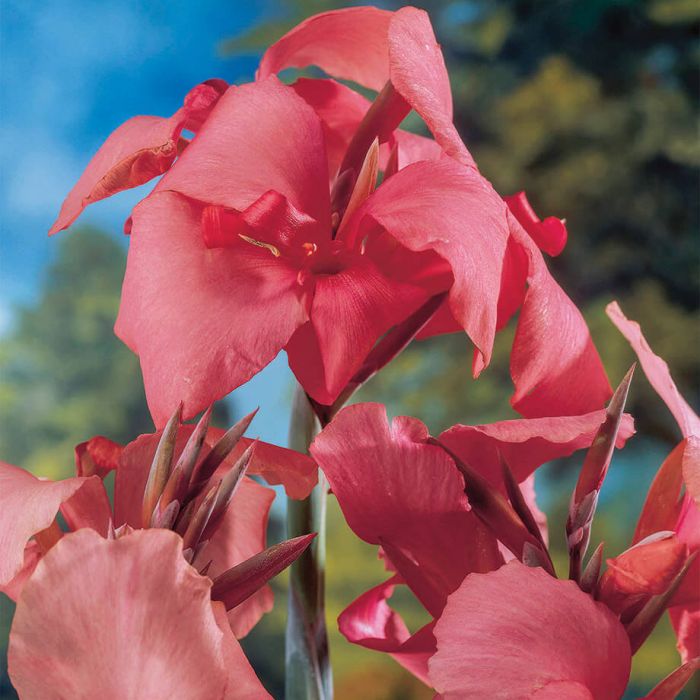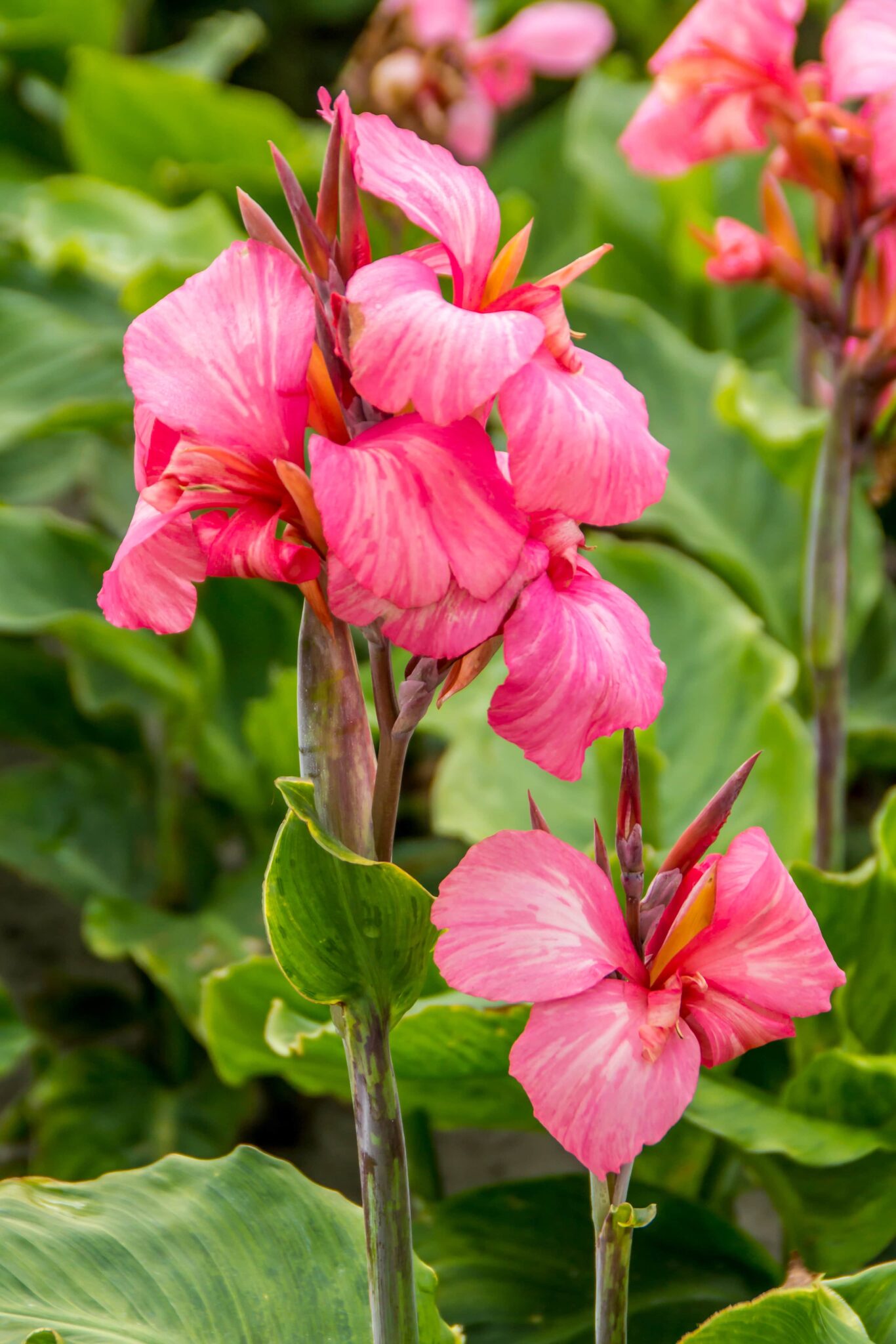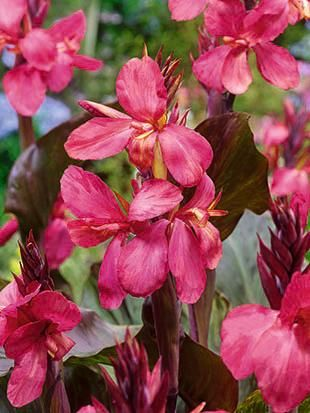Description
China Doll Canna Lily Plants are related to banana plants, but instead of growing bananas these herbaceous tropical plants grow striking pink-red flowers on tall stalks. China Doll Canna Lily Plants have deep green spade-shaped leaves that give the plants one of their common names: Arrow Root. China China Doll Canna Lily Plants reach heights of up to thirty-six inches and can be cultivated by seeds or by transplanting the rhizomes. The bright flowers start to bloom in early to mid-summer and keep going until winter sets in.
China Doll Canna Lily Plants have edible roots and leaves and are a colorful addition to the edible landscape. Grow China Doll Canna Lily Plants in the ground within USDA Zones 7 to 12, or in pots in Zones 4 to 12. They like full sun or partial shade, moist soil, and plenty of water. China Doll Canna Lily Plants are great for planting near their banana relatives, and they make great plants to fill in beds, since they multiply and spread easily. They are easy to grow, provide edible leaves and roots, and provide brilliant pink-red color all summer long.
China Doll Canna Lily Plant Care
China Doll Canna Lily Plants can be propagated from either their tuberous rhizomes or dried seeds. Plant China Doll Canna Lily Plant rhizomes in early spring within Zones 6 or colder, and anytime in Zones 7 to 12. Choose a spot that gets as much direct sun each day as possible, and plant the roots two or three inches deep. Start seeds in pots then plant in ground once roots appear at the pot’s drainage holes. Whether planting rhizomes or seeds, always keep the soil moist until sprouts appear. Water new plants once per week for the first three months, then any time the ground is dry to one-inch deep or more.
Mulch both in-ground and potted Cannas with three inches of shredded tree bark, wood chips, or grass clippings. China Doll Canna Lily Plants spread by sending new shoots up from the roots, and a good bed of mulch will keep weeds from establishing between the canes. Fertilize with slow-release fertilizer once every three months in spring and summer. Potted plants can also be fed using liquid fertilizer diluted to half-strength and applied once per month throughout the warm months.
China Doll Canna Lily Plant Uses & Harvesting
The Canna Lily was an important part of the daily diet in ancient Peru and Ecuador, and it is still used extensively as starch for making noodles in Southeast Asia. In the Pacific Islands, the Canna Lily leaves are used to wrap preparations of ground meats and rice, which are then steamed. The new shoots are edible raw or cooked and can be added to salads or cooked vegetables.
Traditionally, the main food crop from Cannas is the starchy roots, or rhizomes. The roots are harvested from plants that have been growing for one year or more. The unpeeled rhizomes are baked or boiled until they can be split open to reveal a dense starch inside that tastes similar to a potato. Boiled Canna Lily roots can also be dried and ground into Arrow Root Powder, which is used to thicken dishes, or as an ingredient for making starchy noodles.
Advice
China Doll Canna Lily Plants are resistant to most pests and diseases. For this reason they make great additions to edible gardens. Use China Doll Canna Lily Plants to plant between other food crops, and create a natural organic barrier to keep foraging insects and other garden pests from spreading as easily. Cut previously flowered stalks off and use them as mulch. The expired blooms, old leaves, and trimmed canes can also be added to compost.
China Doll Canna Lily Plants like moist soil and can be planted on pond shores or ditch banks. They make great companion plants for ginger plants and banana mats. Mix several colors of Cannas in a large bed to create a tropical look that will provide blooms throughout the warm months. In colder areas, the leaves and canes may die back when frost arrives, but the rhizomes will send out new sprouts in spring. In very cold areas, over-winter rhizomes in a warm, dark place with good air flow, then plant in spring for a new crop.









What others are saying
There are no contributions yet.